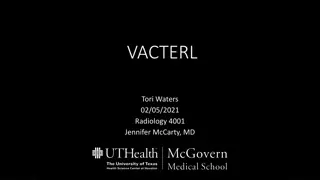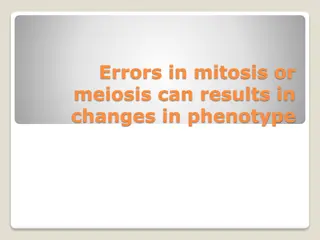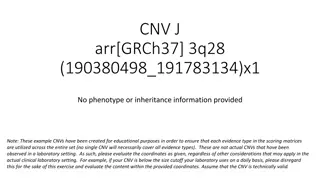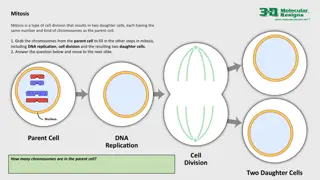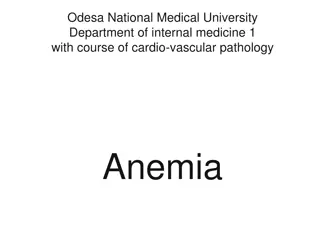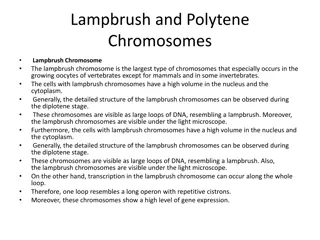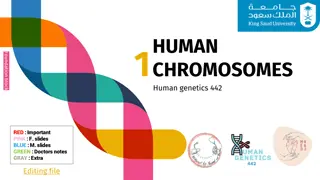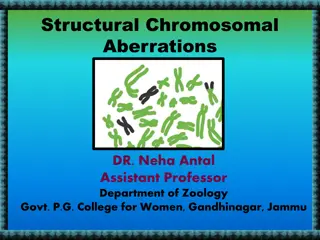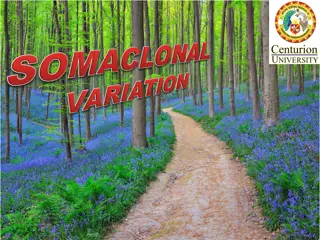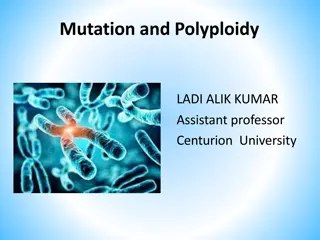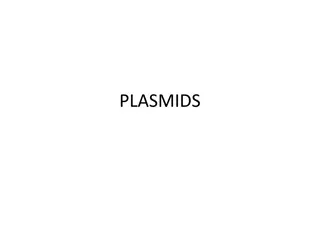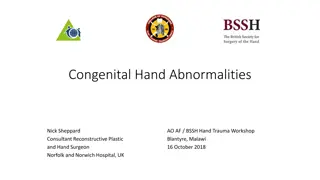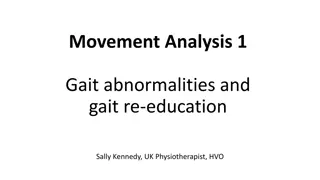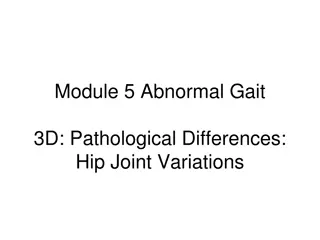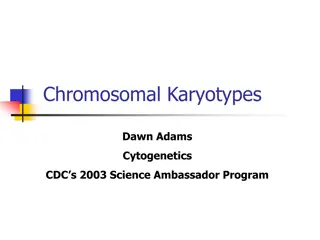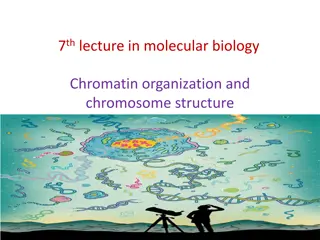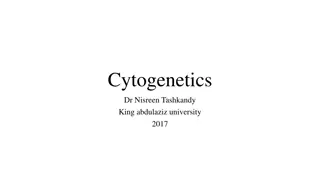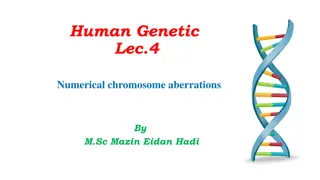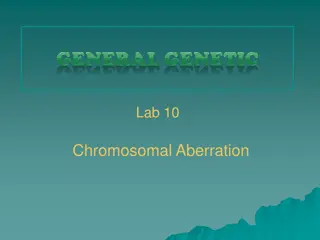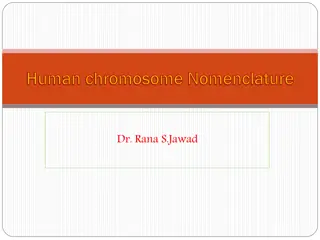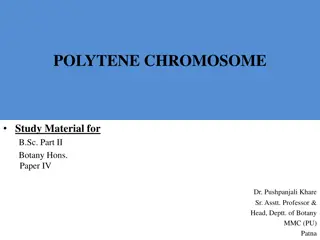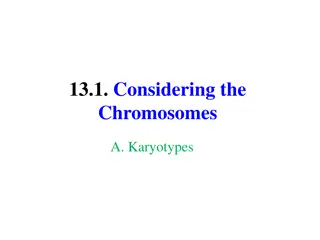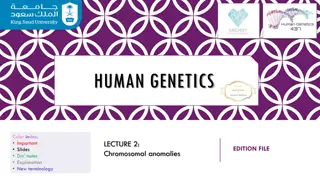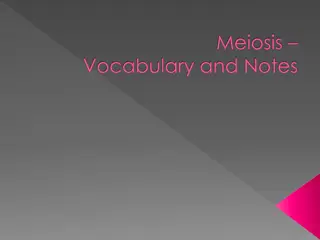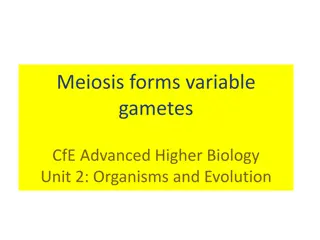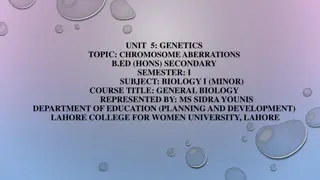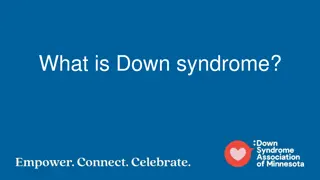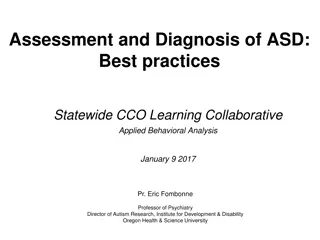❤[PDF]⚡ Zee Zee Does It Anyway!: A Story about down Syndrome and Determination
\"COPY LINK HERE ; https:\/\/uyahsegoro.blogspot.com\/?book=B0BGNN7QZ6\n\n[READ DOWNLOAD] Zee Zee Does It Anyway!: A Story about down Syndrome and Determination | Zee Zee Does It Anyway is a Mom’ Choice Awards® Gold Recipient! PLUSReaders' Favorite gave this book a 5-star review!Have you e
1 views • 2 slides
Case Study: VACTERL Association in a Newborn Female with Imperforate Anus
Newborn female with VACTERL association, imperforate anus, and perianal skin tag identified at birth. Patient transferred for surgical intervention and further workup due to associated abnormalities. Imaging studies show multiple sacral vertebral anomalies. Differential diagnosis includes genetic sy
0 views • 16 slides
Chromosomal Alterations and Their Impact on Phenotype
Errors in mitosis or meiosis can result in changes in phenotype, often due to alterations in chromosome structure such as deletion, duplication, inversion, and translocation. Nondisjunction can lead to abnormal chromosome number, resulting in disorders like aneuploidy. Polyploidy, with extra complet
0 views • 9 slides
Genetic Assessment of CNV.J on Chromosome 3q28 - Case Study J
This case study evaluates a copy number variant (CNV) on chromosome 3q28 (190380498_191783134) associated with a loss of genetic material. The assessment includes genomic content analysis, gene involvement categorization, evaluation of established/predicted genes, and detailed scrutiny of the CCDC50
0 views • 16 slides
Understanding Sex-Linked Inheritance: Key Concepts and Examples
Sex-linked inheritance refers to the transmission of genetic traits determined by genes located on the sex chromosomes. This type of inheritance differs from autosomal inheritance due to the unique characteristics of the X and Y chromosomes. In organisms with XX/XY sex determination, genes on the X
1 views • 21 slides
Cell Division Processes: Mitosis and Meiosis Explained
Mitosis and meiosis are two types of cell division processes with distinct outcomes in terms of chromosome numbers. Mitosis results in two daughter cells with the same number of chromosomes as the parent cell, while meiosis produces four gamete cells with half the chromosome number. This explanation
1 views • 5 slides
Understanding Red Blood Cell Abnormalities in Anemia: A Detailed Overview
This in-depth article delves into the various types of red blood cell abnormalities seen in anemia, such as anisocytosis, poikilocytosis, spherocytes, ovalocytes, acanthocytes, codocytes, drepanocytes, and stomatocytes. It explains the characteristics of each abnormality, their significance in diffe
0 views • 45 slides
Lampbrush and Polytene Chromosomes: Structures and Functions
Lampbrush chromosomes, found in growing oocytes of vertebrates, display large loops of DNA during the diplotene stage, with high gene expression levels. Polytene chromosomes, giant interphase chromosomes in insects, contain multiple strands with distinct banding patterns. Chromocenter serves as the
0 views • 14 slides
Understanding Human Chromosomes and Genetics in Health and Disease
Human chromosomes play a crucial role in genetics, ranging from heredity to disease. Cytogenetics studies their structure and behavior, essential for diagnostics like prenatal testing and identifying genetic disorders. The coiling and folding of DNA within chromosomes, along with the mitotic cell cy
0 views • 15 slides
Understanding Structural Chromosomal Aberrations and Their Impact on Genetic Information
Chromosomal aberrations involve significant changes in chromosome structure and number, impacting multiple genes. These mutations can be structural or numerical, resulting in alterations such as deletions, duplications, inversions, and translocations. Deletions, for example, involve missing chromoso
0 views • 28 slides
Understanding Somaclonal Variation in Plants
Somaclonal variation refers to genetic variations in plants produced through tissue culture, leading to changes in chromosome structure, growth rate, and fertility. This variation can be caused by physiological, biochemical, and genetic factors, and is detectable through morphological and cytologica
0 views • 21 slides
Understanding Mutation and Polyploidy in Genetics
Mutation is a sudden hereditary change in an organism's genetic makeup, leading to variations in offspring. This article delves into the history, types, and causes of mutations, featuring significant discoveries by scientists like De Vries and Morgan. It also explores the concept of spontaneous muta
0 views • 50 slides
Understanding Karyotypes and Chromosomal Abnormalities
Karyotypes are photographic inventories of an individual's chromosomes, helping determine genetic sex and detect abnormalities. Common chromosomal conditions like Down syndrome, Klinefelter's syndrome, and Turner's syndrome are discussed, along with the impact of abnormal sex chromosomes on characte
0 views • 10 slides
Understanding Plasmids: DNA Molecules Free of Chromosome
Plasmids are DNA molecules existing free of the chromosome in a cell. They can be circular or linear and carry genes beneficial to the host. Plasmids replicate from unique origins and regulate copy numbers through various mechanisms. Different replication mechanisms, such as theta and RC, are used,
0 views • 31 slides
Regulation of the Cell Cycle: A Comprehensive Overview
Variation in cell cycle length in humans, controlled by internal and external mechanisms, with special proteins and checkpoint systems ensuring proper progression. External events trigger initiation and inhibition of cell division, while internal checkpoints maintain genetic integrity and chromosome
4 views • 14 slides
Understanding Congenital Hand Abnormalities and Associated Syndromes
Explore congenital hand abnormalities such as macrodactyly, trigger thumb, clasped thumb, preaxial deficiency, and syndromes like Holt-Oram Syndrome and Fanconi Anemia. Learn about assessment, intervention plans, and common treatments provided by experts in reconstructive plastic and hand surgery.
1 views • 26 slides
Portal Vein Imaging Techniques and Anomalies Overview
Portal vein imaging is crucial for evaluating conditions affecting the abdominal part of the gastrointestinal tract. Techniques such as spleno-portography and CT triphasic contrast imaging are used to visualize the portal vein and diagnose anomalies like portal-systemic collaterals and porto-systemi
3 views • 7 slides
Understanding Gait Abnormalities and Re-Education: A Comprehensive Analysis by Sally Kennedy
Sally Kennedy, a UK physiotherapist, explores gait abnormalities common in older individuals and those with neurological conditions. The content delves into the stages of the normal gait cycle, from initial contact to mid-swing, highlighting the importance of identifying and managing common gait pro
0 views • 21 slides
Pathological Differences in Hip Joint Variations: Abnormal Gait Analysis
Understanding pathological gait variations related to hip joint differences is crucial in gait analysis. Excessive sagittal, coronal, and transverse plane motions impact stance and swing phases, leading to deviations in gait patterns. Excess flexion, limited flexion, past retraction, excess adductio
0 views • 13 slides
Understanding Chromosomal Karyotypes: An Overview
Explore the world of chromosomal karyotypes with this detailed guide covering definitions, structures, identification methods, staining techniques, and the importance of karyotyping in genetic analysis. Learn about chromosome labeling, obtaining samples for karyotyping, and the process of arranging
0 views • 12 slides
Understanding Chromatin Organization and Chromosome Structure in Molecular Biology
Chromosomes are the carriers of genetic information in cells, containing genes made of DNA. Chromatin, composed of DNA wrapped around histone proteins, plays a crucial role in organizing genetic material. Humans have 23 pairs of chromosomes, and the Human Genome Project aims to map the human genome.
0 views • 21 slides
Understanding Chromosome Territories in the Nucleus
Chromosome territories refer to specific regions in the nucleus where chromosomes are organized. While chromosomes appear as condensed structures during cell division, they have a different appearance in non-dividing cells like neurons. Scientists have used microscopy to study chromosome organizatio
0 views • 17 slides
Understanding Chromosomes: Key Components, Functions, and Significance
Chromosomes, essential in mitosis and meiosis, are condensed forms of DNA vital for heredity, mutation, and evolution. Learn about their structure, role in inheritance, and impact on species development through historical discoveries. Discover the importance of chromosome sets and genomes in gametic
0 views • 38 slides
Understanding Numerical Chromosome Aberrations in Humans
Numerical chromosome aberrations involve the gain or loss of whole chromosomes, impacting the genome size and potentially leading to genetic mutations. Nondisjunction, where chromosomes fail to separate properly during cell division, can result in aneuploidy - the presence of an extra or missing chr
0 views • 18 slides
Understanding Chromosomal Aberrations and Mutations in Genetics
Chromosomal aberrations and mutations are key events that can alter the genetic structure of organisms. They can lead to numerical abnormalities like aneuploidy and structural abnormalities such as ring chromosomes and chromosome fragments. Understanding these variations in chromosomes is crucial in
0 views • 10 slides
Understanding Human Chromosome Nomenclature and Structure
In humans, each cell typically contains 23 pairs of chromosomes, with 22 autosomes and one pair of sex chromosomes. Chromosomes can be classified based on their structure, centromere position, and banding patterns. The location of the centromere on each chromosome is important for gene mapping and i
0 views • 17 slides
Understanding Polytene Chromosomes in Botany: Study Material for B.Sc. Part II Hons. Paper IV
Polytene chromosomes, giant chromosomes found in salivary glands of insects like fruit flies, exhibit unique banding patterns consisting of bands and interbands. Researchers like Balbiani have studied these chromosomes, noting over 5000 bands in Drosophila. The uncoiling of chromomeres in bands form
0 views • 14 slides
Understanding Chromosomal Abnormalities and Syndromes
Human cells have 22 pairs of autosomes and one pair of sex chromosomes, totaling 46. Karyotypes help diagnose chromosomal abnormalities by aligning chromosomes in size order. Nondisjunction during meiosis can lead to abnormal chromosome numbers in gametes. Disorders like Down Syndrome, XYY Syndrome,
0 views • 30 slides
Understanding Chromosomal Anomalies in Human Genetics
This lecture covers essential topics in human genetics, focusing on mitosis, meiosis, and chromosomal abnormalities. Students will learn about the events in mitosis and meiosis, non-disjunction, and classification of chromosomal anomalies, including numerical and structural abnormalities. Detailed e
1 views • 22 slides
Understanding Meiosis: Vocabulary, Notes, and Key Similarities with Mitosis
Explore the vocabulary and key concepts related to meiosis, including terms like homologous chromosomes, diploid, and haploid. Learn about the process of meiosis, its stages, and the similarities and differences between meiosis and mitosis. Check your understanding of chromosome numbers and crossing
0 views • 21 slides
Understanding Meiosis and Genetic Variation in Organisms
Meiosis forms variable gametes in organisms, leading to increased genetic variation through the production of haploid gametes by meiosis I and II. Key concepts include homologous chromosomes, crossing over, independent assortment, and linked genes. Terminology such as homologous pairs and human chro
0 views • 29 slides
Understanding the Cell Cycle and Mitosis Process
The cell cycle consists of two main periods: Interphase and Mitosis. During Interphase, the cell prepares for division by growing in size and copying chromosomes. Mitosis, the division of the nucleus, results in the formation of two daughter cells with identical chromosome copies. Centrioles and cen
0 views • 26 slides
Cell Cycle Checkpoints and Meiosis Overview
Cell cycle regulation involves checkpoints at key stages like G1/S, G2/M, and M to ensure proper progression or halt if needed. Cancer cells disrupt this control, leading to uncontrolled proliferation. Meiosis involves two successive divisions, resulting in the reduction of chromosome number and gen
0 views • 27 slides
Understanding Chromosome Aberrations in Genetics
Chromosome aberrations are deviations from the normal set of chromosomes, which can involve changes in chromosome number, gene arrangement, and appearance. These aberrations can be associated with genetic diseases and species differences. They encompass alterations in the number of genes within a ch
0 views • 7 slides
Understanding Ploidy and Chromosome Numbers in Organisms
Ploidy refers to the number of complete sets of chromosomes in a cell, impacting the number of possible alleles. Humans are diploid, with 2 sets of 23 chromosomes each from parents, totaling 46 chromosomes. The haploid number for humans is 23, and the monoploid number is also 23. Variations in ploid
0 views • 8 slides
Understanding Down Syndrome: Causes, Effects, and Characteristics
Down syndrome, also known as Trisomy 21, is a genetic condition caused by the presence of an extra 21st chromosome. Discovered by Dr. John Langdon Down in 1866, this condition affects individuals in various ways, influencing their development and abilities. People with Down syndrome may learn skills
0 views • 10 slides
Understanding X-Linked Inheritance and Diseases
X-linked inheritance involves genes on the X chromosome, leading to unique inheritance patterns and characteristics. X-linked diseases vary in expression between males and females due to differences in chromosome composition. X-linked dominant traits are rare but can have significant impacts on affe
0 views • 21 slides
Understanding Down Syndrome: Types, Characteristics, and Impacts
Down syndrome is a genetic condition caused by an extra chromosome, typically chromosome 21. This leads to physical and cognitive challenges, with individuals exhibiting unique abilities. The syndrome presents with distinctive physical features, such as flattened face, almond-shaped eyes, and poor m
0 views • 14 slides
Comprehensive Clinical Evaluation of Children with Cardiac Abnormalities
Initial clinical evaluation of a child with possible cardiac abnormalities includes history taking and physical examination. History should cover symptoms related to pulmonary and systemic venous congestion, cyanosis, cyanotic spells, palpitations, chest pain, and more. The general physical examinat
0 views • 65 slides
Understanding Autism Spectrum Disorder: Assessment, Diagnosis, and Characteristics
This content delves into the assessment and diagnosis of Autism Spectrum Disorder (ASD) with a focus on early markers, DSM-5 criteria, language/communication abnormalities, social interaction abnormalities, and repetitive behaviors/unusual interests. It provides a comprehensive overview of the key a
0 views • 20 slides
![❤[PDF]⚡ Zee Zee Does It Anyway!: A Story about down Syndrome and Determination](/thumb/20462/pdf-zee-zee-does-it-anyway-a-story-about-down-syndrome-and-determination.jpg)
